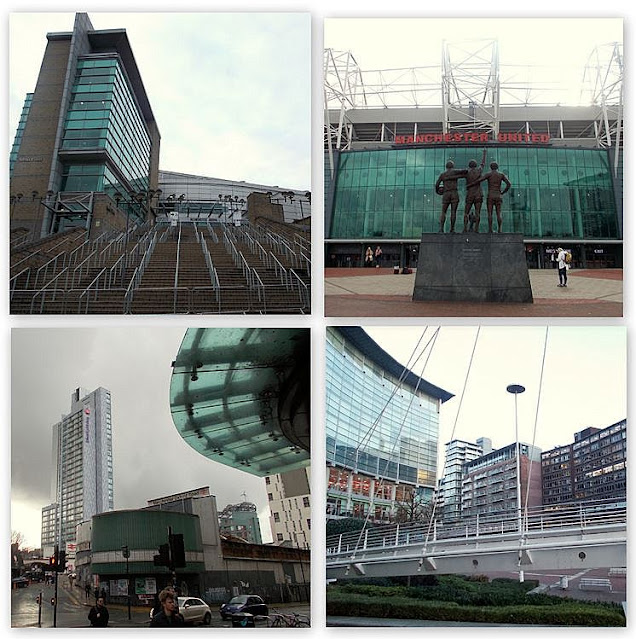Manchester Fabric - Part 2
Manchester in Colours
In the midst of the busy metropolis, there are many charming, unique corners.
One of them is the well-established Chinatown with the must-have, must-see Chinese Arch (upper-left) on Nicholas Street, off Portland Street. Many oriental restaurants and Chinese shops are in the vicinity. Manchester is twinned with Wuhan in China, and it has the second-largest Chinese community in the UK.
Shambles Square (upper-right) contains the timber-framed buildings, the oldest in the city - Old Wellington Inn and Sinclair's Oyster Bar.
Near the Piccadilly Station interesting lamp-like shades amongst the glass offices of some importance.
A few people know that you can walk a large part of the city centre almost entirely through narrow alleyways. They are hidden in plain sight, and had a fantasy feel of the Harry Potter calibre. Dalton Entry (lower-right), for example, has some surprising art - in the memory of the famous scientist, John Dalton, who invented meteorology (and it is not surprising that it happened in Manchester, with its 50 shades of rain!) and discovered colour blindness, among other things.
Exquisite Shopping
The city centre is a mecca for shopping - for the upper taste and pocket.
Selfridges, the famous luxury department store; there are no more than four of them in the whole of the UK: in London, Manchester and Birmingham. It is part of the modern Arndale shopping centre.
In a more traditional way, Barton Arcade and the Boodles store, both listed buildings, have even more appeal to a genteel way of shopping.
All the above are within a 10-minute walk from each other, but one would need a few days and a few grands to spare to explore it properly;)
Modern Architecture
Manchester Arena, near Victoria Station, has become known for all the wrong reasons - the suicidal terror attack in May 2017, but it is worth to know it is the largest indoor venue in the UK, with the capacity reaching over 20,000 people.
Manchester United Old Trafford stadium is not exactly in the city centre but it is one of the most important buildings of the cherished football excellence. It is nearby Salford Quays, that are becoming a symbol of modern Manchester and its glass and steel regeneration.
Gay Village
Manchester is famous for its future-oriented approach, openness and inclusiveness. This has created a cosmopolitan atmosphere yet it is different in many ways from other cities. Tolerance, equality and fight for personal freedom are in high regard here, of which its people had proven, historically (The Suffragettes, Peterloo Massacre, social welfare).
The rainbow-coloured fabric has found its home along Rochdale canal. It is one of Manchester's most vibrant night-party spots, with a variety of pubs, clubs and a festival organised since 2003. It is rather quiet during early daylight but it makes for a friendly walk.
Manchester Bees
Despite being one of the world's mega-cities, Manchester has also a very warm, homely, welcoming atmosphere.
This is why Mancunians were so shocked when the Arena bombing happened. It did the opposite to its intentions, though. The Bee - the city's emblem, has become even more visible everywhere, as a sign of resistance to sectarianism, and people became more united and proud with their friendly values. Manchester Tattoo Appeal offered bee tattoos to raise money for the victims of the attack, for example.
The city character is connected via Manchester Metrolink, the largest tram system in the UK, with more streets' bans on cars, giving more green light to more green energy.
***
There had been a saying, invented during the course of Industrial Revolution, when the city had become the first and one of the largest contributor, reflecting the city motivation, its very fabric:
"What Manchester does today, the rest of the world does tomorrow."




